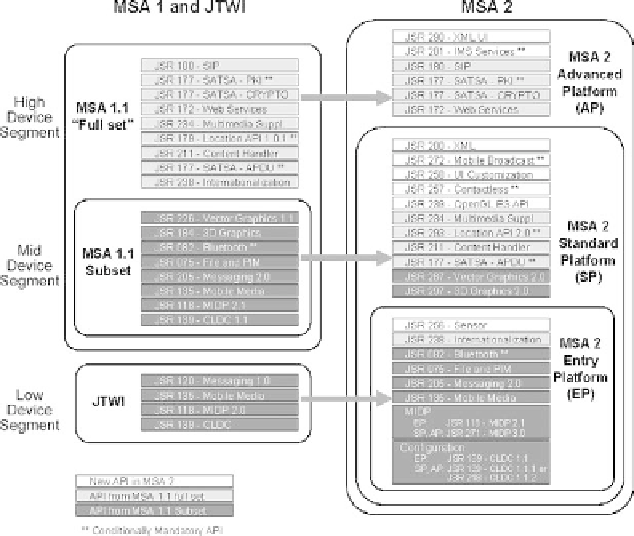Java Reference
In-Depth Information
The advantages and disadvantages of the focus on high-volume devices
with limited capabilities will remain. A predictable application execu-
tion environment across the industry means that dealing with high-end
requirements is not likely to be a primary requirement of MSA in the
immediate future.
So what can we expect to see in MSA 2.0 and MIDP 3.0? The
structure of the JSR-249 MSA 2.0 specification is similar to that of MSA
1.1 (Component JSRs, clarifications, recommendations, etc.). The current
scope is for three categories of MSA 2.0 platform:
•
MSA 2.0 Advanced Platform (AP) - backward compatible with full
MSA 1.1
•
MSA 2.0 Standard Platform (SP) - backward compatible with MSA
1.1 Subset
•
MSA 2.0 Entry Platform (EP) - backward compatible with JTWI 1.0.
As you can see from Figure 6.7, there are new JSRs coming and all of
them will bring more opportunities for services and developers. (Note: As
we write this, JSR-249 is not finalized so there may be some changes in
the final release.)
Figure 6.7
From JTWI and MSA 1.1 to MSA 2.0

